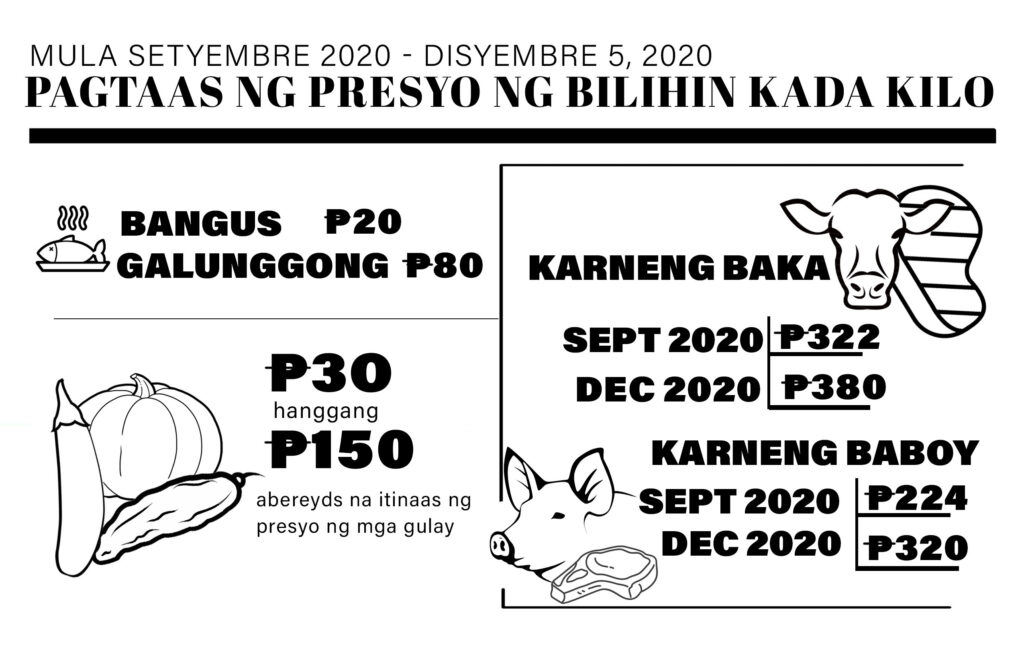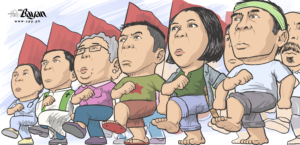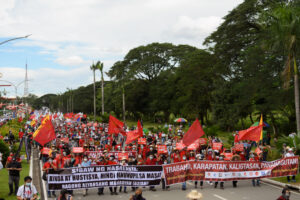Prices surge despite weak demand


In June, the Bangko Sentral ng Pilipinas announced that the inflation rate will most likely remain low saying that demand is weak due to the pandemic. Despite this, inflation rates already went up three times this year (July, October and November.) According to latest data, inflation recently rose by 3,3%, with food prices registering the steepest increase.
In reality, household expenditures went down for the fist time in the last two decades, by up to 13% in the second quarter and 7% during the third quarter of the year compared to the same period in 2019. Demand fell due to income losses since the lockdown was imposed. These losses are yet to be recovered.
From March to October this year, education and personal services, provided mostly by the informal sector, dropped. Expenditures on alcohol and tobacco, household appliances, recreation and food prepared outside homes also dropped. The worst decline was in transportation (62% on the second quarter and 21% on the third quarter). Amid the pandemic, health expenses went down (-9%) despite requirements for sanitation, testing and resistance building.
Meanwhile, food expenditures rose by 6%, same as in previous years, despite supply disruptions, intermittent price increases and decrease in food consumption outside homes.
Communication expenses rose slightly, despite the implementation of online classes and work-from-home arrangements. Filipinos spent more during the same period in 2018-2019.
Payment for house rent and utilities (electricity, water, others) rose by 7% despite private companies’ initial promise to suspend collections.
On the other hand, rice imports fell by 13.3% compared to 2015, according to a US agricultural agency (Global Agricultural Information Network). This is despite the government authorizing the importation of 3.73 million metric tons (MT) from January to May which is 43% more compared to the same period last year. Only 1.65 million MT arrived in the country due to exportation restrictions in major rice-producing countries.
Philippine consumption of beef also fell by 21%. Based on patterns in the past months, pork consumption dropped by 20% (worsened by the African Swine Fever pandemic) and poultry production fell by 15%. Consumption of milk, which is 99% imported, also decreased.
According to data by BSP last September, the income of families remained inadequate even after the economy reopened. Most people’s savings have been depleted. Families who had the ability to save up fell from 37.8% during the first quarter of the year to 24.7% during the third.
According to government statistics, food prices permanently increased especially after implementation of the TRAIN Law.
From 2016 to 2019, prices of vegetables such as bitter gourd, eggplant, squash, tomatoes, carrots, string beans and potatoes increased, as well as prices of fish such as milkfish, scad and tilapia.
Contrary to government promises that rice prices will fall when the Rice Importation Liberalization Law was implemented, it actually rose from ₱41.72/kilo in 2016 to ₱42.73/kilo in 2019, and ₱45/kilo this year. Despite unbridled importation, and palay farmgate prices continue to drop as low as ₱7 to ₱12/kilo.











